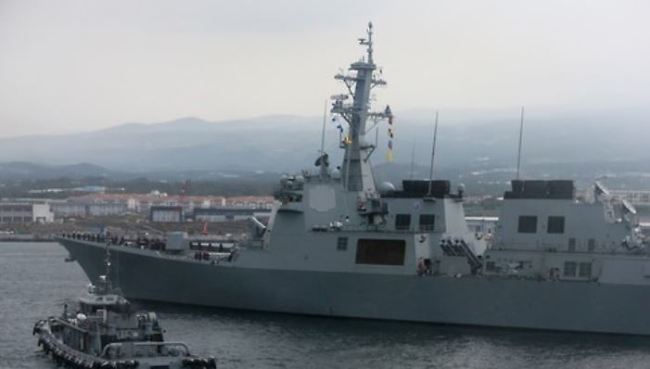South Korea's Navy said Thursday it plans to create an aviation command and a new task fleet in tandem with the military's push for "aggressive operations" in response to North Korean provocations.
The Navy aims to put the units into operation by 2023 if the scheme is approved by the government, according to a report to the National Assembly's defense committee for an annual audit.
The envisioned aviation command, to be led by a rear admiral-level officer, will be in charge of more than 70 aircraft and helicopters.
The 41,000-strong Navy is seeking to acquire additional maritime patrol and operation choppers.
The proposed mobile fleet, if formed, will include several 6,000-ton KDDX Aegis destroyers and three additional 7,600-ton KDX-III Aegis destroyers. The KDDX ships, which will be built in the mid-2020s, are to be equipped with an advanced ballistic missile defense system and ship-to-surface missiles.
"We will focus on improving our capability to strike the North Korean leadership and core targets inside (the North's) ballistic missile operation area," the Navy said during the parliamentary audit held at the Gyeryongdae military compound in South Chungcheong Province.

The Aegis destroyer Sejong the Great of South Korea`s Navy (Yonhap)
Responding to a lawmaker's question, Adm. Um Hyun-seong, the chief of naval operation, said his troops will deal resolutely with the North's provocation targeting the South's western islands near the sea border.
"We are maintaining a combat posture to retaliate strongly if the enemy provokes," he stressed.
In the event of an emergency, a unit in charge of defending a related area has no time to characterize it as a "local" skirmish or a "full-blown" war, he pointed out.
"(We) will retaliate immediately and then the Joint Chiefs of Staff will take command," the admiral said.
Marine Corps Commandant Lt. Gen. Jun Jin-goo said his troops will regard any provocation on the northwestern islands as the start of a full-blown war.
He said the South's Marines are sharpening skills to strike the origin of an attack and its commanding and supporting forces as well.
Jun's comments came as the Marine Corps is seeking to play a bigger role in defending not only the nation's front-line islands in the Yellow Sea but also Dokdo and Ieodo in the eastern and southern waters, respectively.
The small elite military subdivision hopes to launch a major unit, named "Strategic Islands Defense Command," around in 2019 to replace the Northwest Islands Defense Command.
The existing command serves as a control tower for combat operations to counter any invasion of the five western islands just south of the Northern Limit Line -- Baengnyeong, Yeonpyeong, Daecheong, Socheong and Udo.
"There's a need to establish a unified command system for strategic islands in the East Sea, the Yellow Sea and the South Sea," the Marine Corps said in a briefing to lawmakers. It cited the growth of neighboring countries' amphibious capabilities as a reason for the move.
Japan claims sovereignty over Dokdo, South Korea's easternmost islets. China argues that Ieodo, home to South Korea's ocean research facilities, lies within its exclusive economic zone.
South Korea's marines, totaling roughly 28,000, are deployed to Ulleung Island, located close to Dokdo, on a rotational basis for regular exercises.
The Marine Corps is pushing for a unit based on Ulleung and a small coast guard team stationed on Dokdo. (Yonhap)



![[Herald Interview] 'Amid aging population, Korea to invite more young professionals from overseas'](http://res.heraldm.com/phpwas/restmb_idxmake.php?idx=645&simg=/content/image/2024/04/24/20240424050844_0.jpg&u=20240424200058)


